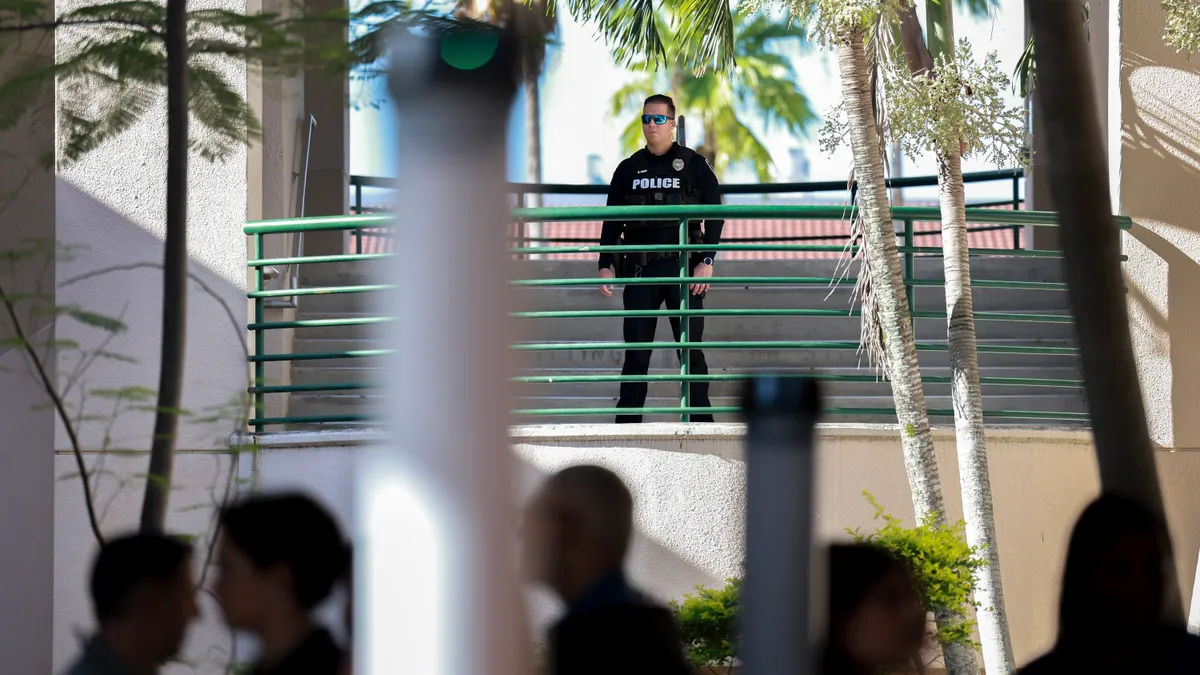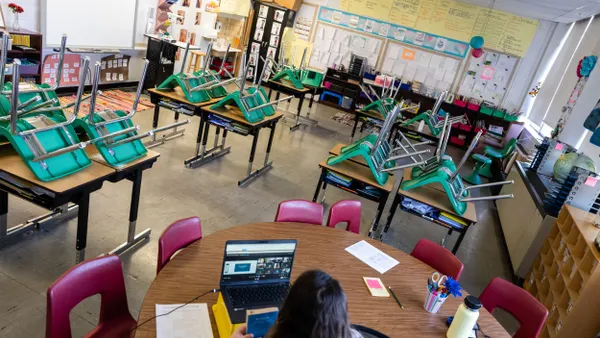Dive Brief:
- Student arrest rates at schools where police are present were more than double that of schools without police on-site, according to an analysis of national data by the U.S. Government Accountability Office.
- The report found arrests were more likely when police were involved in student discipline in the 51% of schools that had police present at least once a week.
- Police in schools has been a controversial topic, with some school systems reducing law enforcement presence because of concerns over discipline disparities while others have increased it due to concerns about safety.
Dive Insight:
When examining student demographics, GAO found that school-based arrest rates for Native Hawaiian/Pacific Islander, Black, and American Indian/Alaska native students were two to three times higher than White students. Students with disabilities served under the Individuals with Disabilities Education Act had more than double the rate of arrests and referrals compared to their peers without disabilities.
"Our analysis and Education’s own guidance recognize that students can experience even greater adverse consequences as their race, gender, and disability statuses overlap," the report said.
In its report, GAO cited several investigations by the U.S. Department of Education's Office for Civil Rights of discipline disparities in some school districts. Florida’s Pasco County Schools, for example, agreed to several improvements after the district was found to have routinely used suspensions and referrals to law enforcement to respond to students’ disability-related behaviors.
To help address any disparities among various groups of students, GAO recommends the Education Department also collect arrest and referral data for students with disabilities served under Section 504 of the Rehabilitation Act of 1973, among other changes.
GAO used the 2017-18 Civil Rights Data Collection from the Education Department to compare the rates for different subgroups of K-12 students who were arrested nationwide. More recent CRDC statistics from the 2020-21 school year are available, but GAO decided not to use those numbers because of low rates of in-person learning due to the pandemic. Specifically, White students were more likely to attend school in-person that school year compared to Black, Hispanic/Latino and Asian students, GAO said, citing data from the Education Department.
GAO conducted the analysis of policing in schools at the request of a House committee report that accompanied the fiscal year 2023 Departments of Labor, Health and Human Services, Education, and Related Agencies Appropriations Bill.






 Dive Awards
Dive Awards








